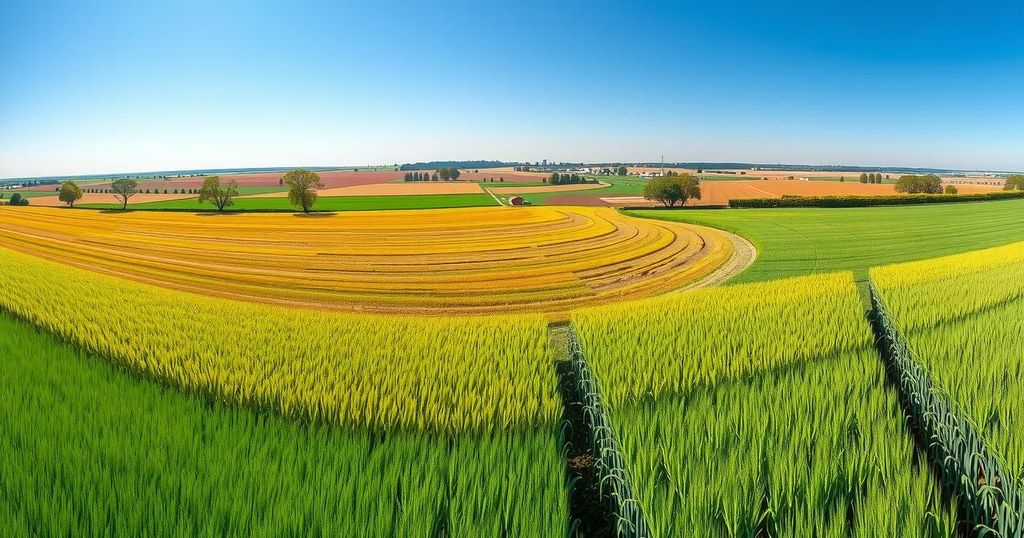Argentina’s Agricultural Boom: Weather-Driven Yields and Export Opportunities

- Argentina’s agricultural sector is primed for record growth this year.
- Favorable weather patterns and strategic policies drive wheat production.
- Soybean harvest defies drought fears with strong completion rates.
- Exports to Egypt could ease reliance on Black Sea suppliers.
- Investors should consider wheat futures and agribusiness stocks.
Argentina’s agriculture benefits from favorable conditions
Argentina’s agricultural sector is experiencing an incredible boom this year. Many factors are converging to create optimal conditions for farmers, especially for wheat and soybean production. The combination of favorable weather patterns, strategic policy changes, and an insatiable global demand for these crops has positioned Argentina as a standout player in the agricultural world, signaling all signs point toward a transformative year.
Wheat planting gains momentum as conditions improve
Currently, the wheat planting season for 2025/26 is gaining speed, with the Buenos Aires Grains Exchange reporting a significant jump; 72.7% of the planned 6.7 million hectares of wheat has been planted as of late June, rising from just 60% a few weeks back. The transition has been aided by a cooler and drier July, which allowed farmers to clear previous crops of soy and corn. Rainfall patterns briefly disrupted operations in May across eastern regions such as Buenos Aires, but a dry June improved soil conditions, encouraging more planting. The Rosario Grains Exchange has indicated that moisture levels in the soil now match 2021’s levels, which were historically high.
Soybean harvest concludes with impressive results
Over in the soybean sector, completion rates for the 2024/25 harvest have reached 98.3%, marking a positive end to a season that had originally sparked fears due to drought. Official data from the USDA suggests that soybean production has reached a healthy 52.0 million metric tons, which is not only up 7.9% from the previous season but also 23% higher than the five-year average. The increase in total area planted, which now stands at 17.3 million hectares—the most extensive since the 2015/16 season—has effectively countered yield losses that resulted from a shift by farmers away from corn, a crop impacted by disease.
Strategic export opportunities offer lucrative prospects
As for export opportunities, Argentina’s agriculture is notably well-positioned to meet Egypt’s rising wheat import needs, projected to hit 13 million metric tons for 2025/26. A strong crop this year could potentially relieve Egypt’s dependence on Black Sea import supplies, helping to mitigate global market pressures. On the soy front, with exporters now benefitting from a reduced tax rate of 26% on soybeans, Argentina’s output of soybean meal and oil—which makes up 85% of its agricultural exports—is expected to remain competitive. Sectors like wheat futures and agribusiness stocks are worth watching; for example, companies like Cargill and Bunge Limited could experience expanded margins from this thriving agricultural market.
Potential risks impact agricultural outlook
However, it’s crucial to consider the risks ahead. Volatility in weather patterns, particularly a dry August, could negatively affect wheat yields. Additionally, evolving geopolitical dynamics around Egypt’s procurement strategy may disrupt the pricing landscape, particularly with supply adjustments from the Black Sea region. There’s also uncertainty surrounding Argentina’s export tax reductions set to expire in June 2026, which could alter market conditions significantly.
Positive long-term outlook for agriculture sector
In conclusion, the outlook appears remarkably optimistic for Argentina’s agricultural sector, thanks to a mix of ideal weather and shifting policies that serve to invigorate growth. For investors, there are long-term opportunities in commodities that maintain steady demand.
In summary, Argentina’s agricultural expansion is driven by favorable weather conditions, substantial policy adjustments, and consistent global demand for key crops. The increase in wheat and soybean production, along with a strong export position, paints a promising picture for investors despite ongoing risks related to weather volatility and geopolitical uncertainties. As such, attention should be directed towards strategic investments while closely monitoring crop developments and external market effects. The agricultural boom in Argentina is ripe for opportunity.







